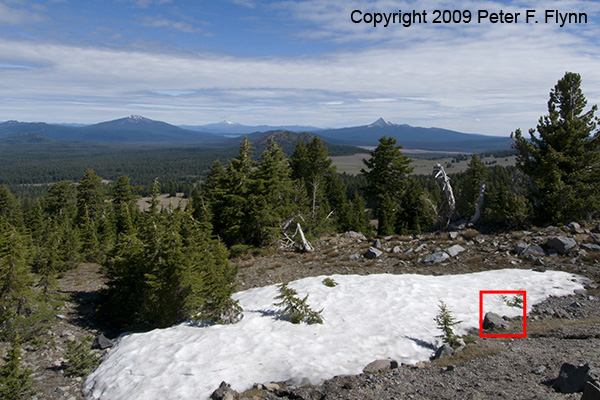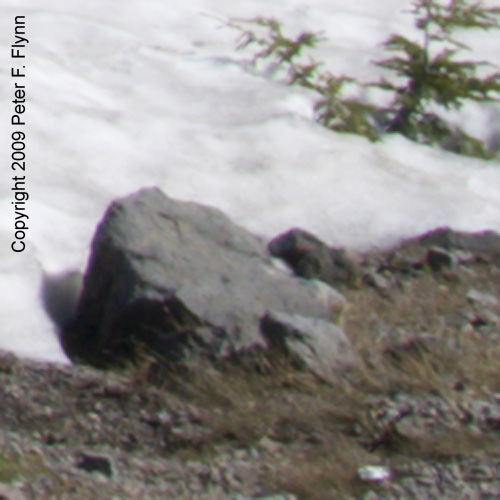Chromatic aberration (CA) consists of two effects. One manifestation of CA is the residual uncompensated variations in the plane of focus for light impinging on the film plane or sensor. Camera lenses are made up of a series of individual glass elements – a major design consideration is adding compensating elements to cancel out the natural dispersion (spreading out) of light as it passes through the lens elements. Reducing CA must be balanced against the other design requirements that include brightness, edge-to-edge sharpness, contrast, and bokeh. There is really no remedy for this sort of lens imperfection.

Consider the image above; which was originally posted in the February 6th entry. The limited resolution and size of the image prevents you from determining whether there is any CA present. We’ll expand the image and focus on the region enclosed with the red square as shown below.

Notice the purple fringe around the left side of the rock at the margin between the rock and the snow. That’s your classic example of CA ladies and gentlemen. Note that you can also see the effect around a smaller rock near the lower right, and in fact amongst all of the rocks in the lower section of the crop.
Tags: CA, camera raw, chromatic aberration, Crater Lake, Oregon Cascades, workflow